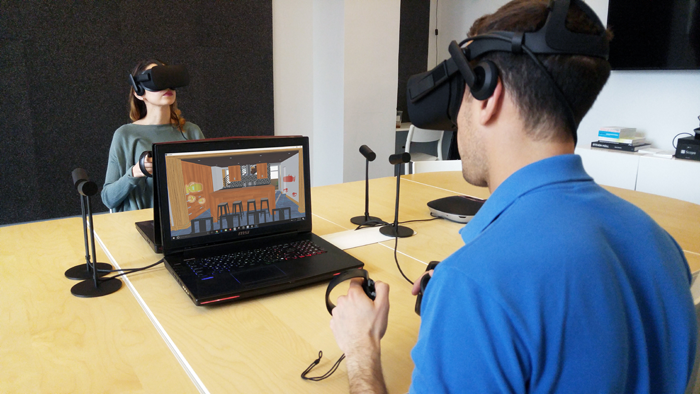Empowering BIM with Virtual Reality
Technically speaking, VR can be referred to as immersive multimedia or computer-simulated reality

BIM helps us to get a virtual model of the building/structure and the idea of how it would be looking actually on the proposed site.
Moving a step ahead, what if we get to enter into this building/structure and get the realistic feel of materials, lighting, and walk in this space as we would actually when the building is actually built...?
This is actually possible and this technology is called Virtual Reality (VR)… But, what is VR?
Technically speaking, VR can be referred to as immersive multimedia or computer-simulated reality, that replicates an environment ,that simulates a physical presence in places in the real world or an imagined world, allowing the user to interact in that world.
It is a fully digitalised simulation.
VR could be referred to immersive experience that could transport you digitally to different place, time& environment from the current.
It provide you 360 degree view with enhanced visualization.
As you move your head, the image moves just as it should in real life, thus, enhancing the actual 3D model.
The VR results can be achieved with the help of Mobile VR, Console VR & apps.
Some of them are as listed below:
- Oculus Rift VR
- Google Cardboard
- Google Daydream
- HTC Hive
- Samsung Gear VR
- Zeiss VR One
- Storyboard VR
- Enscape
- Insite VR
- Revizto
- Iris VR
- Prior VR
- Fuzor
- Revit Live
- Edificius VR
- Twinmotion
- Virtuix Omni
- ARQVR
There are many more apps & headsets available but most common are the above ones….The use of Smartphones, Tablets added to computers is also increasing enormously to avail the VR technology.
How does VR empower BIM? What are its advantages?
As the modelling process becomes digital with the help of the Building Information Model (BIM), VR enhances this process with visualization helping the stakeholders to intensify their perception of designs & escalate decision making.
For architects & designers, VR works in alliance with digital modelling & planning to solve issues like spatial issues along with clashes & design limitations, , thus, enabling faster project delivery making it aesthetically pleasing.
It would also aid to improving team collaboration for better, speedy & accurate decision making at all stages avoiding rounds of revisions.
Moreover, VR would make the building/design more appealing for the customer/client to walk inside the model & explore each and every corner of it enabling live experience & better visualization for the client, thus, resulting into their contentment . All this would eventually, lead them to make wise decisions about their investments into the property.
To summarize this technology is benefiting construction firms today by:
- Managing changes at an early stage
- Reducing Rework
- Maintaining Deadlines
- Resolving Issues Faster & Better
- Increasing Quality of work by avoiding misinterpretation
- Reducing cost of rework
- Strengthening their relations with clients & positive interactions
The adoption and acceptance of VR has been ascending.
At places where this technology is widely been practiced, (particularly AEC industry), have reaped a good deal in many means.
To conclude, VR is not only becoming popular in AEC industry but also emerging as a powerful technology for Aviation, Medical science & the Military…
-BIM will make it easy!!












